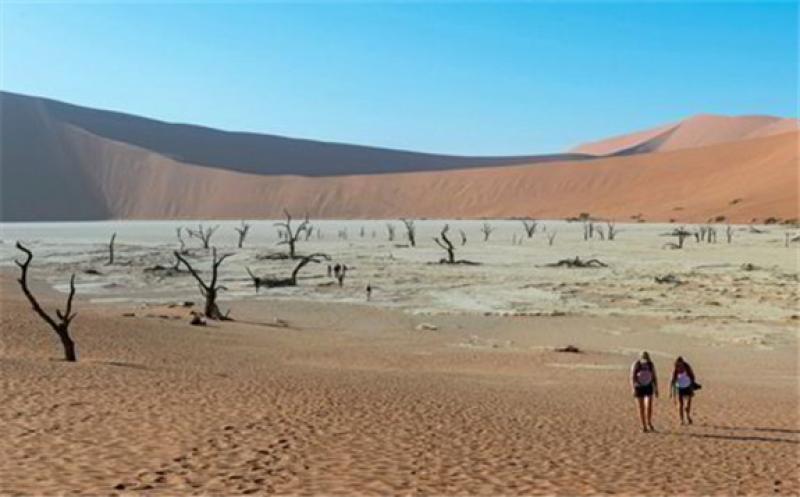Germany plans to import huge volumes of what it claims will be the world's cheapest green hydrogen under a pact with Namibia that further widens a global dash to secure prime locations for H2 production linked to massive renewable power installations.

German science minister Anja Karliczek and Obeth Kandjoze, head of the Namibian planning commission, signed a joint communiqué of intent to build up the southern African nation's enormous solar and wind energy potential, and then ramp up its green hydrogen economy.
The science ministry will provide up to €40m ($47m) in support from Germany’s post-Covid economic stimulus programme for the partnership, Karliczek pledged.
“There is already a race around the world for the best hydrogen technologies and the best locations for hydrogen production,” she said.
“From our point of view, Namibia has particularly good chances in this competition. We want to use them together.”
Hydrogen strategy
The deal with Namibia is part of Germany’s €9bn ($10.6bn) national hydrogen strategy that was presented last year and includes €2bn in support to green hydrogen projects in partner countries around the world, as Europe’s largest economy due to space restraints won’t be able to produce sufficient green H2 at home to meet expected demand.
Berlin last year signed a deal with Australia – one of the world’s most promising countries in the emerging global hydrogen economy – amid an effort to secure massive future imports of the green gas, as well as exports of electrolysers made in Germany.
Namibia, while not yet a renewables hotspot like Australia, also has very favourable conditions. The African nation is very sparsely populated with only only 2.5 million inhabitants, and boasts more than 3,500 hours of sun, plus strong winds.
Those conditions would enable production of green hydrogen via electrolysis at a price of €1.50-2.00 per kg ($1.76-2.34) – the cheapest in the world, according to Karliczek, who said the expected production prices in Namibia would be even more competitive than in renewable hydrogen front-runner countries Chile and Australia. Some analysts, however, have warned that pricing assumptions of green hydrogen mega-projects are based on over-optimistic assumptions.
“The [German] National Hydrogen Council estimates that German industry alone, excluding refineries, will have a hydrogen requirement of 1.7 million tonnes per year by 2030, which will continue to increase thereafter,” Karliczek said.
“This demand forecast shows that we need large quantities and cheap kilo prices quickly. Namibia can deliver that.”
Namibia in November plans to present its own hydrogen strategy. But the country is also one of the driest on the African continent, creating a need for desalination plants in order to provide the water for the giant electrolysers necessary to produce large quantities of green H2 for export.
Germany plans to at first carry out a feasibility study, followed up by German-Namibian pilot projects and the training of local specialists for hydrogen.
“The feasibility study aims to show the potential of a green hydrogen economy, including innovative seawater desalination, in Namibia and exports to Germany,” said Stefan Kaufmann, a German lawmaker from Karliczek’s Christian Democrats (CDU).
“Building on this, we want to test in pilot projects how green hydrogen can be generated and transported in Namibia.”
Vulnerable to climate change
Kandjoze added that Namibia is particularly prone to the consequences of climate change, and needs to act now.
“Namibia is particularly vulnerable to the consequences of climate change. Two thirds of our electricity comes from hydro-power, which depends on the rain and the rivers at Ruacana,” the head of the Namibian planning commission said.
“Twenty-three percent of our workforce depends on agriculture. Long periods of drought, as we have recently experienced, are only a harbinger of catastrophic conditions for many of our fellow citizens.”
The country hopes to be able to start with green hydrogen exports before 2025, after previously covering its own needs for renewable energy and green H2.
The hydrogen agreement comes in the wake of a recent reconstruction aid deal, which foresees payments of €1.1bn from Germany to Namibia in compensation for colonial crimes, although the funds are not officially called a reparation payment.
Namibia was a German colony between 1884 and 1915, during which Germany from 1904-07 massacred tens of thousands of Herero and Nama in the first genocide of the twentieth century. The country was later occupied by South Africa before it became independent in 1990.